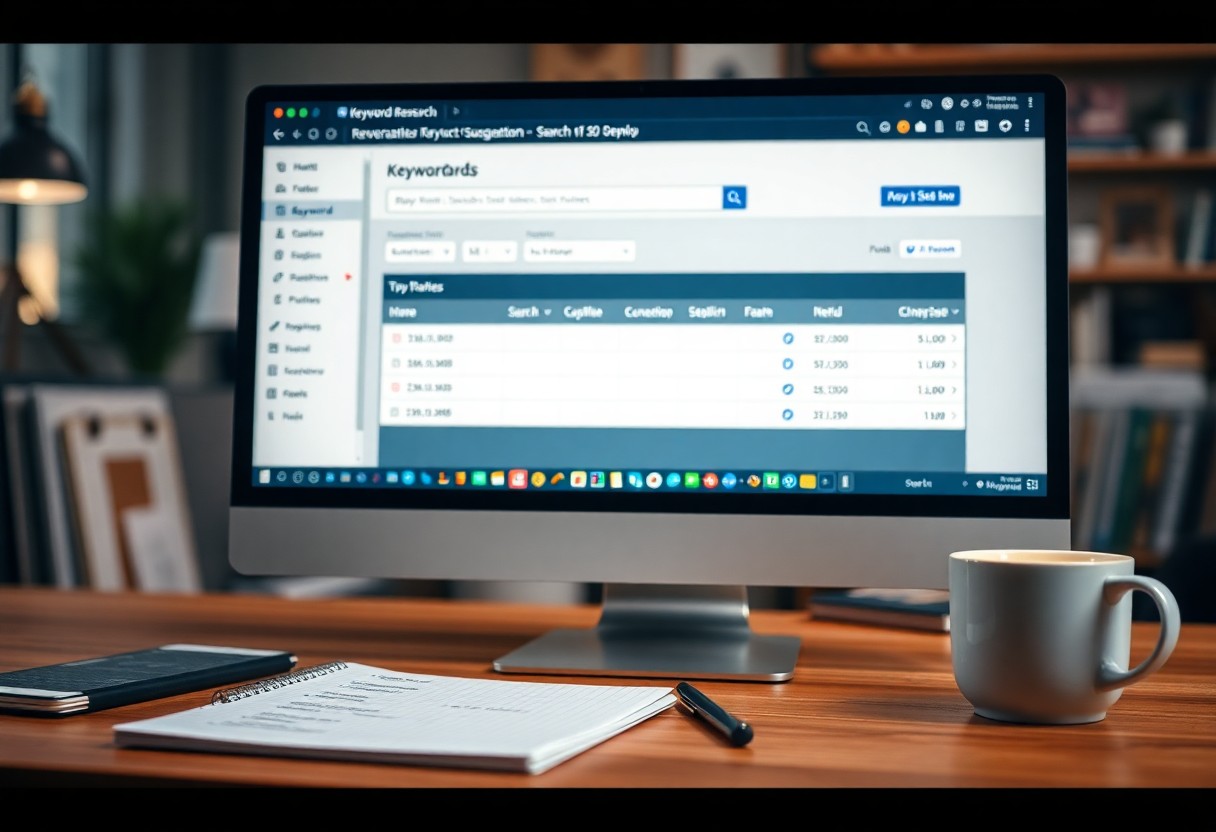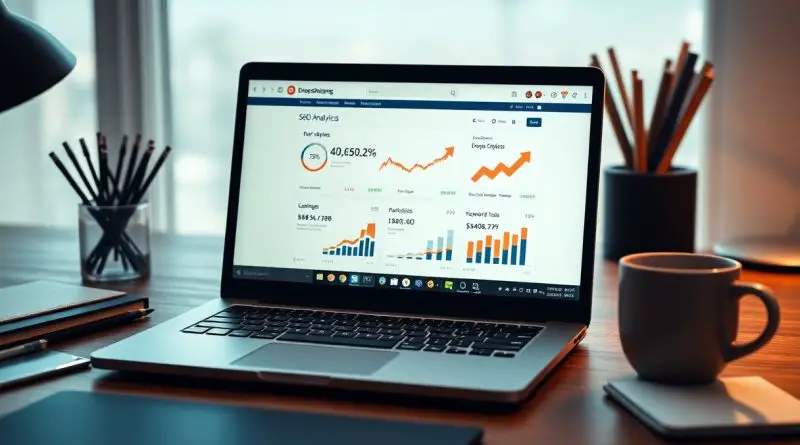Optimizing Your Dropshipping Store for Search Engines (SEO)
There’s a significant opportunity for you to enhance your dropshipping store’s visibility online through effective SEO strategies. By conducting keyword research, you can identify the terms your potential customers are searching for. It’s important to optimize product titles and descriptions to align with these keywords. Additionally, improving site speed can positively impact user experience and search rankings. Lastly, building backlinks from reputable sites can further boost your organic visibility, driving more traffic and sales to your store.

Understanding SEO Basics
Effective SEO sets the foundation for your dropshipping store’s success. You need to grasp SEO Basics to drive organic traffic and boost your search rankings. From keyword research to link-building strategies, every component contributes to improving your store’s visibility on search engines.
What is SEO?
SEO, or Search Engine Optimization, is the process of enhancing your website’s visibility in search engine results. It involves multiple practices, including keyword optimization, content creation, and technical adjustments, designed to attract both potential customers and search engine crawlers to your site.
Importance of SEO for Dropshipping
SEO is vital for your dropshipping business as it directly affects your online visibility. Low visibility means fewer potential customers can discover your products, severely impacting sales. By effectively implementing SEO strategies, you can significantly increase your store’s organic traffic and conversion rates.
In the competitive dropshipping sector, studies show that companies with optimized SEO see up to 14 times more organic traffic than those without. As a dropshipper, focusing on keyword research, optimizing product titles and descriptions, and improving your site speed can lead to higher rankings in search results. Building backlinks also enhances your site’s credibility and authority, making it more attractive to search engines and potential customers alike.

Conducting Keyword Research
Effective keyword research serves as the backbone of your SEO strategy. By identifying the right keywords, you’ll attract relevant traffic to your dropshipping store and enhance your chances of conversion. Aim to uncover terms that your target audience uses and incorporate them strategically throughout your content for maximum impact.
Tools for Keyword Research
Utilize various tools to streamline your keyword research process. Platforms like Google Keyword Planner, Ahrefs, and SEMrush provide valuable insights into search volume, competition levels, and trends, helping you identify high-potential keywords tailored to your niche.
Identifying Target Keywords
To effectively identify target keywords, analyze your competitors and use keyword tools to explore terms with manageable competition and high search volume. Focus on long-tail keywords, as they often yield better conversion rates due to their specificity.
Identifying target keywords demands a blend of research and intuition. Look for keywords that reflect user intent; for example, “buy eco-friendly water bottles” suggests a stronger intention to purchase than a generic term like “water bottles.” Tools like Google Trends can provide insights into seasonal fluctuations, guiding your content calendar. Additionally, consider incorporating local keywords if your audience is geographically specific, which can boost visibility in relevant searches. Always cross-reference with competitors to underscore gaps and opportunities in your keyword strategy.
Optimizing Product Titles and Descriptions
Product titles and descriptions are vital for enhancing SEO and driving traffic to your dropshipping store. Crafting these elements effectively not only helps your products rank higher in search results but also attracts potential customers by providing clear, engaging information. A focus on keyword integration and user intent is crucial for maximizing visibility and conversion rates.
Best Practices for Titles
Start by incorporating primary keywords in your product titles, ideally at the beginning. Keep titles concise—ideally under 60 characters—while ensuring they are descriptive enough to capture the essence of the product. Avoid keyword stuffing; instead, aim for clarity and relevance to user searches.
Writing Effective Descriptions
Your product descriptions should be informative and engaging, ideally between 150 to 300 words. Focus on highlighting features, benefits, and unique selling points. Include secondary keywords naturally to enhance searchability without compromising readability.
To elevate your product descriptions, use storytelling techniques that resonate with your audience. Address potential customer pain points and how your product solves them. For example, if you’re selling eco-friendly products, highlight sustainable materials and environmental impact. Incorporate bullet points for easy scanning, and infuse your descriptions with a persuasive tone that drives urgency or excitement. Use high-quality images alongside your descriptions to create a visually appealing shopping experience that complements your written content.

Improving Site Speed
Importance of Site Speed
Site speed significantly impacts user experience and SEO rankings. A delay of just a few seconds can lead to higher bounce rates, meaning potential customers leave your site before making a purchase. Google prioritizes fast-loading sites in search results, making speed a key factor for dropshipping SEO that makes your Shopify store successful.
Techniques to Enhance Performance
To boost your site’s performance, you can implement various techniques. Begin with image optimization, ensuring all visuals are in compressed formats. Minifying CSS and JavaScript files reduces load times, while enabling browser caching helps your site load faster for returning visitors.
Additionally, consider using a content delivery network (CDN) to distribute your content across multiple servers globally. This reduces latency by allowing users to access data from a server closest to their location. Regularly monitoring your site with tools like Google PageSpeed Insights can help identify areas for improvement, ensuring you consistently enhance your store’s speed.
Mobile Optimization
Mobile optimization is imperative for your dropshipping store, as over half of all global web traffic comes from mobile devices. Google’s algorithms prioritize mobile-friendly sites, impacting your SEO rankings directly. If your store isn’t optimized for mobile users, you risk losing potential customers who favor the convenience of shopping on their phones.
Responsive Design
Implementing responsive design ensures your store adapts seamlessly to various screen sizes, providing an optimal viewing experience. This approach not only enhances visual appeal but also improves engagement, as users can easily navigate your site, regardless of device. A responsive layout can boost your SEO ranking by lowering bounce rates and increasing time spent on the site.
User Experience on Mobile Devices
Delivering a positive user experience on mobile devices is vital for retaining customers and driving conversions. Prioritize fast loading times, easy navigation, and clear calls-to-action. A well-organized layout supports intuitive browsing, making it simple for users to find products and complete purchases, ultimately enhancing your sales potential.
Enhancing user experience on mobile devices involves focusing on design elements like larger tap targets and legible fonts. Ensure that your buttons are easily accessible without zooming. Use optimized images to reduce load times and avoid overwhelming users with excessive information. Incorporating customer reviews and trust signals prominently can also help establish credibility, fostering a sense of confidence in potential buyers and encouraging them to proceed with their purchase.
Building Backlinks
What are Backlinks?
Backlinks are links from external websites that point to your dropshipping store. They act as endorsements of your content, signaling to search engines that your site is reputable and relevant. The more quality backlinks you have, the higher your site can rank in search engine results, driving more organic traffic your way.
Strategies for Acquiring Quality Backlinks
Focus on creating valuable content, guest posting on authoritative blogs, and using social media to promote your products. Engaging with influencers in your niche can also lead to valuable backlinks. Aim for high-traffic sites that align with your audience for maximum impact.
To expand on strategies for acquiring quality backlinks, consider leveraging content marketing by producing in-depth guides, infographics, or case studies that relate to your niche. These types of content are often shared and cited by others, increasing link opportunities. Collaborate with other businesses through co-marketing campaigns, allowing for mutual backlinking. Additionally, monitor your competitors’ backlink profiles to identify potential sites you might be able to collaborate with or get featured on. Quality over quantity is key: focus on getting links from reputable and relevant sites to truly enhance your SEO efforts.
Conclusion
On the whole, optimizing your dropshipping store for search engines is necessary for enhancing your online visibility and driving traffic. By conducting thorough keyword research, refining your product titles and descriptions, improving site speed, and building quality backlinks, you can significantly increase your chances of ranking higher in search engine results. To explore deeper into Improving search engine optimization (SEO), implement these strategies consistently to see tangible results in your store’s performance.
FAQ
Q: What is keyword research and why is it important for dropshipping SEO?
A: Keyword research involves identifying the terms and phrases potential customers use when searching for products. This process is crucial because it helps you target relevant keywords to improve your store’s visibility on search engines, potentially leading to increased traffic and sales.
Q: How can I optimize product titles and descriptions for better search engine ranking?
A: To optimize product titles and descriptions, include relevant keywords naturally within the text, ensure titles are clear and descriptive, and provide unique content for each product. Aim for concise descriptions that highlight key features and benefits, enhancing both user experience and SEO performance.
Q: What steps can I take to improve the speed of my dropshipping store?
A: To enhance site speed, consider compressing images, minimizing code, leveraging browser caching, and using a content delivery network (CDN). Regularly audit and optimize website elements to ensure fast loading times, as speed affects user experience and search rankings.
Q: How do backlinks help improve the SEO of my dropshipping store?
A: Backlinks are links from other websites to your store, indicating to search engines that your site is credible and valuable. Building high-quality backlinks from reputable sites can improve your store’s authority, helping to boost your rankings and organic traffic.
Q: What tools can assist me in optimizing my dropshipping store for SEO?
A: Various tools can aid in SEO optimization, including Google Keyword Planner for keyword research, SEMrush or Ahrefs for tracking backlinks and site performance, and GTmetrix or Google PageSpeed Insights for analyzing and optimizing site speed. Utilizing these tools helps streamline your SEO efforts.

